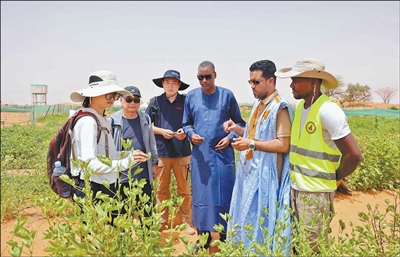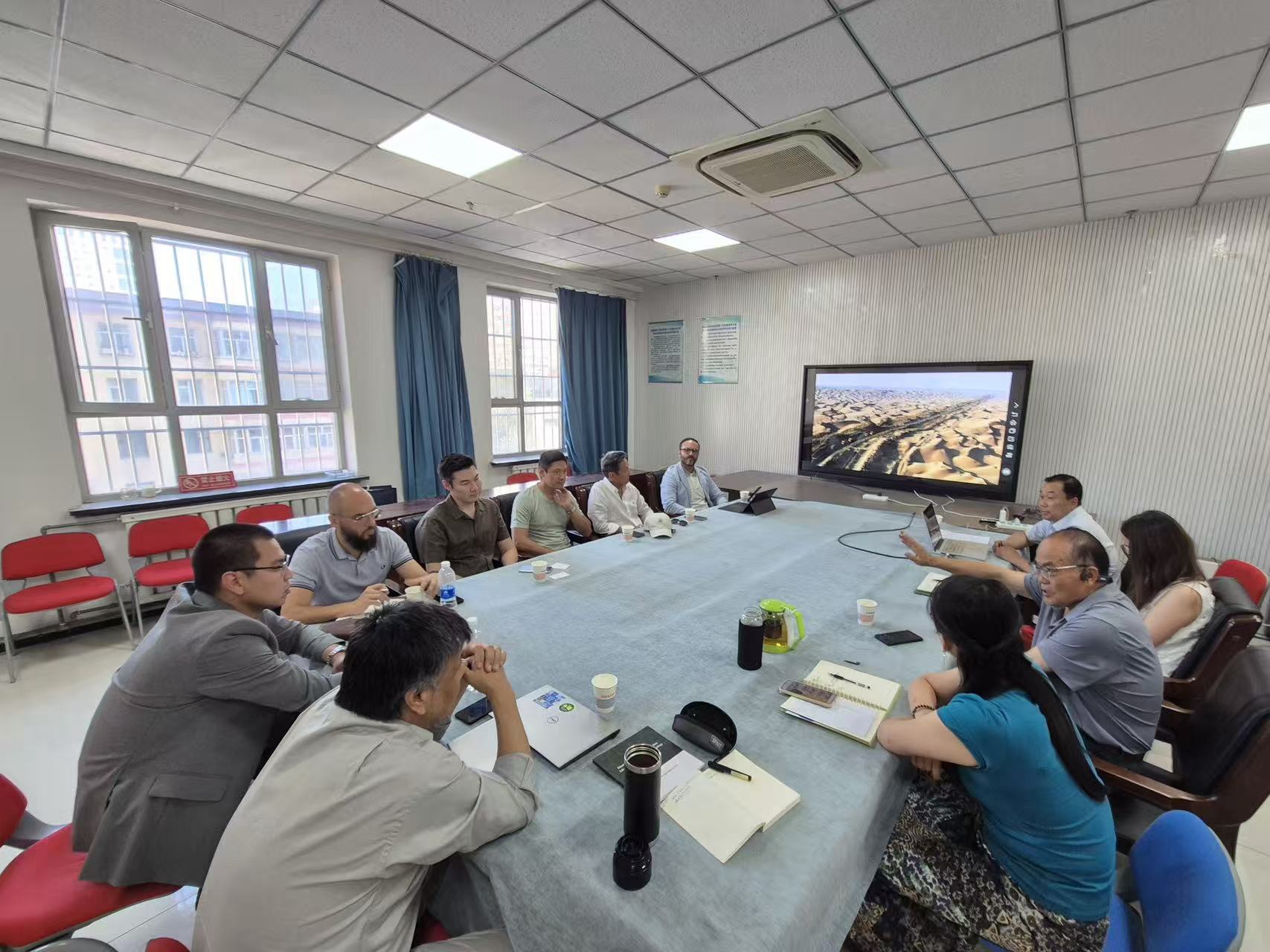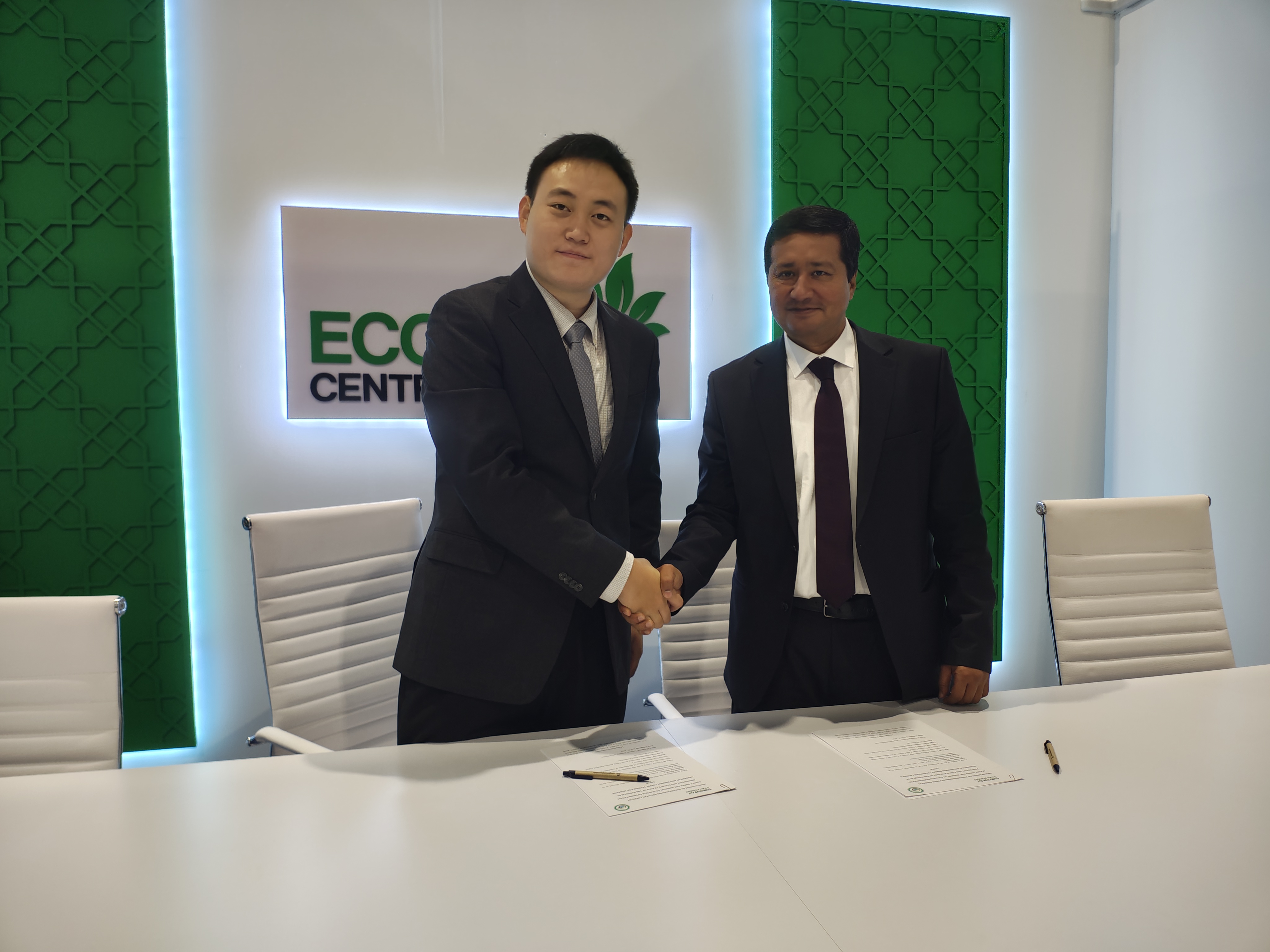On August 13, 2025, People’s Daily reported the phased achievements of the "Desertification Control in Key Areas of the Great Green Wall of Africa" project in Mauritania, led by the Xinjiang Institute of Ecology and Geography, Chinese Academy of Sciences. As a partner enterprise, Sinoway Forest Technology Co., Ltd. provided assistance and support to jointly establish the China-Africa Green Technology Park demonstration zone.

The following is a reprint of the original article from People’s Daily:
Starting from Nouakchott, the capital of Mauritania, and driving east along National Highway N3 for about an hour and a half, a vibrant green park emerges in the Gobi desert. This is the China-Africa Green Technology Park, a collaborative project between China and Mauritania. The two sides are actively exploring ways to combat desertification, improve livelihoods, and cultivate technical talent, helping Mauritania address the challenges of natural environment and climate change while providing a new model for green development in Africa.
"Growing Vegetables in the Sand—Chinese Scientists Are Amazing"
Entering the park, rows of Sudan peas, eggplants, and tomatoes have already been harvested, while melons and watermelons are about the size of a fist. Further inside, young seedlings of Acacia arabica, pearl millet, and Egyptian sorrel thrive, swaying gently in the breeze and emitting a faint fragrance.
"Last year, we harvested about 900 kilograms of vegetables and fruits, which were distributed free of charge to approximately 6,000 villagers in 15 surrounding villages. The villagers praised us, saying, ‘You’ve grown vegetables in the sand—Chinese scientists are amazing!’" said Mahmoud Abdourahman, Deputy Director of the Great Green Wall National Agency of Mauritania.
To counter the southward encroachment of the Sahara Desert, 11 sub-Saharan African countries, including Mauritania, launched the Great Green Wall initiative—a 15-kilometer-wide, over 7,000-kilometer-long forest belt aimed at halting desertification in the Sahel region through ecological and sustainable methods, addressing land degradation and desertification in arid areas across Africa.
The China-Africa Green Technology Park project is jointly implemented by China and Mauritania, with the Xinjiang Institute of Ecology and Geography (hereinafter referred to as "Xinjiang Institute") providing technical support for the demonstration zone’s construction and follow-up. Covering 4 hectares, the project includes peripheral sand-fixing areas, economic fruit forests, sandy soil vegetable cultivation zones, forage planting areas, and poultry farming zones. It is a practical demonstration of the key research project "Cooperative Research and Demonstration of Practical Technologies for Desertification Control in Key Areas of the Great Green Wall of Africa," supported by China’s Ministry of Science and Technology.
Since the Chinese Academy of Sciences signed the first cooperation agreement with Mauritania in 2017 to participate in the Great Green Wall initiative, the China-Africa Green Technology Park project has achieved a series of remarkable results. A total of 100 hectares of sandy land have been successfully stabilized, with 4 hectares transformed into sustainable green spaces using Chinese sand-fixing technologies.
Zhou Na, Associate Researcher at the Xinjiang Institute, stated, "We will continue monitoring and research to develop a replicable and scalable technical approach for the Great Green Wall initiative."
"Contributing to the Well-being of Mauritania’s People—My Work Is Truly Valuable"
The China-Africa Green Technology Park is equipped with many innovative tools: dozens of photovoltaic panels at its center form a solar water pumping system, which powers water extraction from wells and supports smart irrigation for the park’s crops. White cylindrical objects buried in the sand make up a soil moisture monitoring system, measuring soil moisture and temperature at different depths. The data is transmitted via the internet to a data center, where it is combined with meteorological station readings to optimize irrigation.
In Zhou Na’s view, the park is a "testing ground for green technologies." The project operates under a tripartite synergy model of "research institutions + leading enterprises + demonstration bases": research institutions handle technological R&D and innovation, enterprises provide standardized production and quality control of materials, and the demonstration base serves as the core platform for technology integration, validation, and promotion.
In one corner of the park, irrigation technician Mohamed Iselmu squats in the sand, skillfully replacing components of an electromagnetic valve-controlled sprinkler system—a skill he mastered last year. He said, "My Chinese colleagues are from Xinjiang, where the natural environment is similar to ours. They have extensive experience in desertification control. With their help, I believe we can achieve green development here."
To date, the project has trained 45 local technicians in greening technologies and directly created 120 local jobs. Tourad Meidou, the Mauritanian project coordinator who studied in China for two years and now works at the Ministry of Environment and Sustainable Development, is responsible for advancing China-Africa green technology cooperation. He noted that many young locals who once relied on herding have now mastered skills like pump operation, drip irrigation adjustment, and seedling planting. "This project contributes to the well-being of Mauritania’s people—my work is truly valuable," he said.
"China advocates the concept that ‘lucid waters and lush mountains are invaluable assets.’ We hope to learn from China’s green development experience. The China-Africa Green Technology Park has already achieved outstanding results, and we are working to make it a model project for replication in other parts of Mauritania and across Africa," Mahmoud added.
"Not Just a Bilateral Project, but a Green Revolution Sowing Seeds of Hope for the Future"
Not far from the park, Acacia arabica trees stand like umbrellas.
"Last year, we conducted aerial seeding of Acacia arabica, Egyptian sorrel, pearl millet, and flame vine across about 20 acres. Without any manual intervention, the overall survival rate exceeded 40%," said Pang Guocong, representative of Sinoway Forest in Mauritania. Through cooperation with the park, the company established a demonstration zone for afforestation technologies adjacent to the park, integrating Chinese desertification control expertise with the Great Green Wall initiative.
How do these plants survive in Mauritania’s nine-month dry season? Pang explained that the company selects tree species adapted to desert conditions and employs a unique "seed ball" technique—seeds are encased in a 3–5 cm soil clod rich in fertilizer and moisture, supporting early growth.
Building on this success, in December 2024, Mauritania’s Ministry of Environment and Sustainable Development, the Great Green Wall National Agency, and Chinese research and corporate representatives signed a memorandum to jointly develop 10,000 hectares of carbon sink forests, using the park’s experience as a blueprint for standardized, replicable, and adaptable regional governance.
Mauritanian officials noted that the 20-acre pilot zone has validated the potential of Chinese technologies for African deserts. The next step involves reducing costs and improving efficiency through mechanization and community cooperation to advance the Great Green Wall initiative.
"Green development is not only part of China-Africa cooperation under the ‘Eight Major Initiatives,’ ‘Nine Programs,’ and ‘Ten Partnership Actions,’ but also a key component of high-quality Belt and Road cooperation," said Lei Jiaqiang, Researcher at the Xinjiang Institute and Vice President of the Chinese Society of Sand Control and Desert Industry. Chinese experts will continue collaborating with Mauritanian counterparts to contribute to desertification control and green development in Africa.
Mauritania’s Minister of Agriculture, Hamahoula, expressed gratitude for China’s long-term support in agricultural production and hopes to learn from China’s expertise in water-saving irrigation, agricultural mechanization, and vegetable cultivation to boost efficiency in Mauritania’s agriculture.
"The China-Africa Green Technology Park is not just a bilateral project but a green revolution sowing seeds of hope for the future," said Laghdaf, Mauritania’s Minister of Environment and Sustainable Development. "This cooperation is a true win-win."
(Reprinted from People’s Daily, Nouakchott dispatch)









